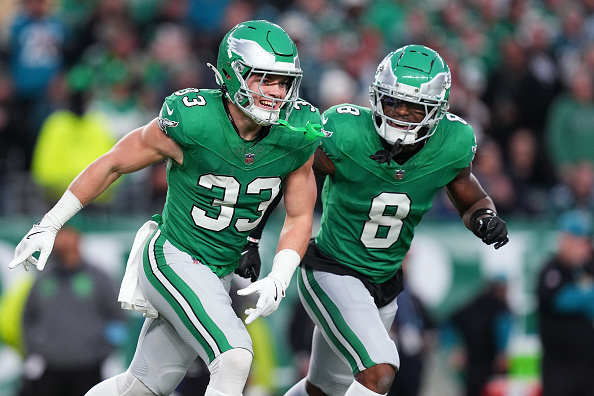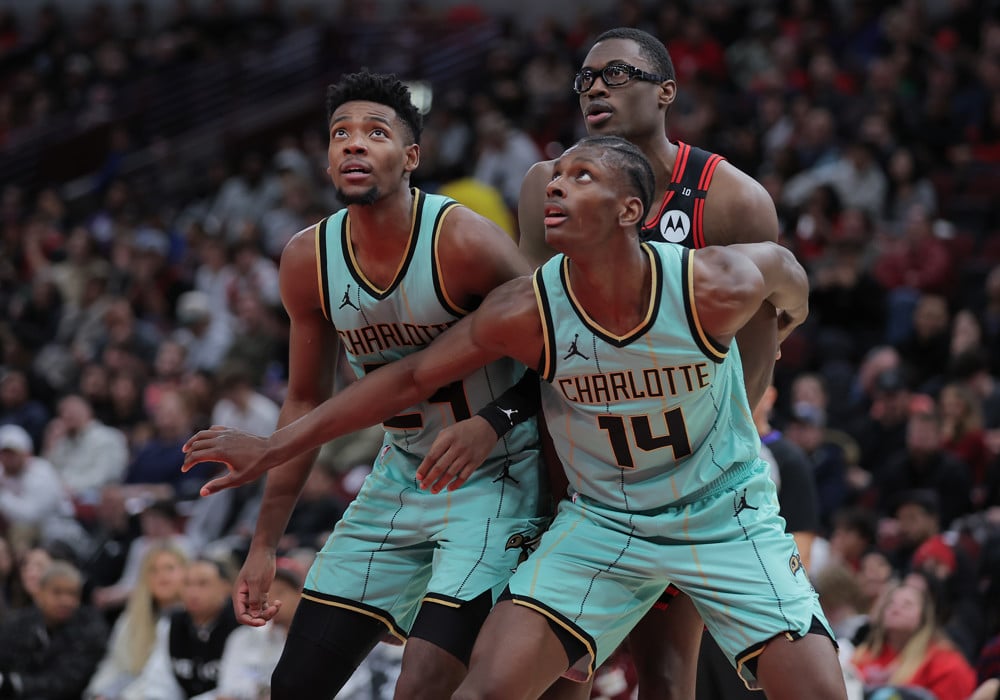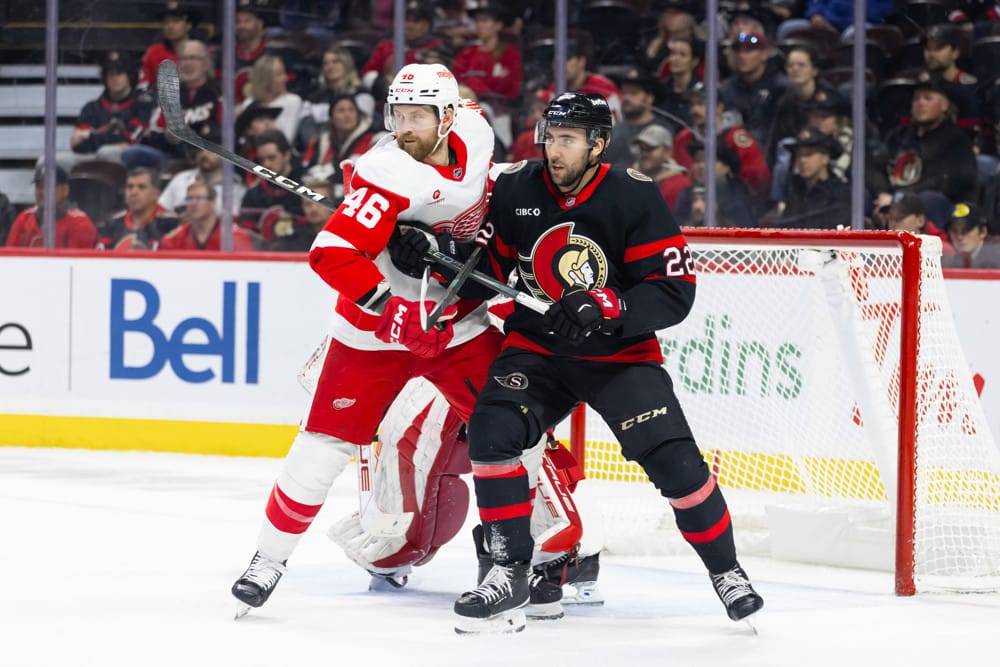Why the NFL has seen a running back renaissance led by Saquon Barkley, Derrick Henry

It looked like the franchise-cornerstone, bell-cow running back was heading for NFL extinction in recent seasons as teams decided young, cheap alternatives provided much more value than established veterans. But a look around the league this season shows there’s still a big place for feature backs.
The top offenses in the league have found catalysts in their running backs. The Philadelphia Eagles’ Saquon Barkley is now the first 2,000-yard rusher since Derrick Henry did it in 2020. Henry has found new life with the Baltimore Ravens running next to Lamar Jackson and leads the league with 5.8 yards per carry, the highest in his career. Josh Jacobs’ ability to churn out the hard yards is vital to the Green Bay Packers’ offense. The San Francisco 49ers’ offense was severely affected by the absence of Christian McCaffrey, and he didn’t look fully recovered from his injury in the few games he did play.
GO DEEPER
Dissecting the NFL MVP race: Allen, Jackson or Burrow? Plus, the case for Saquon Barkley
After years of devaluing running backs, will teams value them again? Teams will likely be more willing to pay elite running backs, and they might be more willing to give veteran backs long-term deals. Because backs aren’t getting worn down with 25-plus carries a game as they were in previous eras, their shelf lives look longer.
Two years ago, I spoke with two members of NFL analytics departments who weren’t authorized to speak publicly, and they predicted that running back value could increase because …
• edge defenders and linebackers have gotten faster but smaller over the years.
• there’s less emphasis on developing run-stopping techniques.
• the increased split-safety looks and light boxes make it harder to pass the ball efficiently and create explosive pass plays.
Those trends have continued two years later:
• From 2016 to 2021, defenses lined up in nickel (five defensive backs) on 57 percent of snaps. From 2022 to 2024, defenses lined up in nickel on 64 percent of snaps.
• I spoke with an NFL front-office member who said that not only have linebackers gotten smaller, but overall, linebacker play has also gotten worse.
• We only have a two-high rate (percentage of plays defenses play with two deep safeties) available dating back to 2019, but it has increased every year and is the highest it’s ever been this season. The main reason for the increase in two-high usage is the popularity of Vic Fangio’s and Mike Macdonald’s defensive systems.

GO DEEPER
Sirianni ‘probably’ resting Barkley despite being within shot of rushing record
Even with the defensive changes, offenses still aren’t going to go back to the heavy run offenses we saw in the ’90s. There hasn’t been an uptick in rushing attempts or averages league-wide in the past few seasons. The passing game is still king with the altered rules in the modern game. However, the top teams in the league are equipped to counter these defensive trends. Teams such as the Eagles, Ravens and Detroit Lions have the offensive lines to bully teams and give their elite backs opportunities to get to the second level and work their magic.
Expected points added (EPA) is a stat that’s closely tied to a team’s success, as it connects a running back’s performance to the likelihood of scoring. A running back with a high EPA is instrumental in his team’s scoring opportunities and chances of victory.
Only five rushers in the past 10 years have had more than 200 carries and a higher EPA per rush than 0.1. Four of those seasons occurred in the last two years, including three this season. Running backs have become increasingly ingrained in the passing game as well, but we’ll focus on rushing because it is directly linked to the current defensive meta.
This season, passing yards per game and explosive play rate are the lowest they’ve been in 10 years. The formula defenses are using is to force offenses to drive down the field methodically, forcing them into third-down situations in which they can use simulated pressures to get to the quarterback. This has been a sound approach for most teams but not against offenses that can create explosives running the ball.

The teams with the highest EPA per designed rush also average the most points per drive. In this era, you have to be able to run the ball to be a high-scoring offense. The only team that doesn’t run the ball well while averaging over 2.5 points per drive is the Cincinnati Bengals, but they have Joe Burrow, who is having an all-time season as a passer, and two No. 1 receivers — a luxury few teams have.
This chart below is from 2020, when the relationship between EPA per rush and points per drive wasn’t as closely correlated. Teams could score without running the ball well.

How does this inform us about teams? Does this mean running backs are valuable again?
“It reinforces what you already believe,” an NFL analytics staffer told me. “For scouts or general managers that like running backs, they’ll use the success of the backs this year to justify their opinions. For guys that don’t like to invest in backs, they’ll point to the situation.”
One of the reasons teams started devaluing running backs is that the position’s success is closely tied to team situations. It’s extremely hard for even an elite back to overcome a bad offensive line and scheme. Barkley and Henry had to cope with being on bad teams in 2023, but their production boomed this season, including Barkley eclipsing 2,000 yards rushing, because they are in ideal situations. For teams with strong offensive lines and a good scheme, paying a good veteran back or drafting a back high could be worth the squeeze.

GO DEEPER
Teams don’t have to establish the run to win games, and the analytics proves it. But the run isn’t dead, either
The Eagles and Ravens have always prioritized building through the trenches, and their run games also benefit from having athletic quarterbacks. It’s been proven that running backs are aided in option schemes when the defense also has to worry about the quarterback. The Eagles’ Howie Roseman, one of the most analytically minded general managers in the league, typically doesn’t spend much capital on running backs, but maybe he saw how the league was trending and gave Barkley a significant contract (third-highest average annual salary per year among running backs). The Lions don’t have the running threat with quarterback Jared Goff, but they’ve built a pulverizing offensive line (four former first-round picks) and then signed David Montgomery and drafted Jahmyr Gibbs in the first round.
The Tampa Bay Buccaneers rebuilt their offense line, but their running game didn’t take off until they drafted Bucky Irving this season in the fourth round. Like any other position, you can find gems later in the NFL Draft. For running backs, teams can find productive players outside the first two rounds, but it’s difficult to find elite runners later in the draft. A few years ago, the production between a good running back and an elite running back wasn’t as significant, but it seems like the divide is starting to grow.

GO DEEPER
Why Nick Chubb, Saquon Barkley and Josh Jacobs are ideal counters to NFL defense
The Kyle Shanahan and Sean McVay zone schemes that have taken over the league require backs with great vision, not necessarily with a great physical skill set, which is why teams that ran that scheme had success seemingly finding running backs off the street to run it. However, the best running teams are moving toward gap schemes to quickly get north and south against the light boxes they are facing. Even McVay transitioned his offense into a gap scheme last season. In gap schemes, having big backs who can explode through holes and rip through arm tackles is a nightmare for defenses.
Kansas City Chiefs DC Steve Spagnuolo – Defending Zone vs Gap Schemes
Zone or Gap schemes, which is tougher to defend? “The answer that pops in to my mind first, is gap schemes.”
– Most teams run a version of zone schemes, players get more reps versus zone
– Gap Schemes have… pic.twitter.com/uh0a0pOV0b— James Light (@JamesALight) December 30, 2024
Elite running backs are more valuable in this era than they have been, but only for teams that have good offensive lines, smart schemes and maybe an athletic quarterback. A team like the Kansas City Chiefs, which ranks ninth in ESPN’s run block win rate, should look to add an elite back through free agency or the draft. They tried a couple of years ago, drafting Clyde Edwards-Helaire in 2020 in the first round, but he never emerged as an elite back. The Chiefs see a lot of light boxes, and adding a true and consistent threat as a runner could make their offense explosive again.
This year’s draft class is littered with strong running back prospects. It’ll be interesting to see how highly they get drafted and whether teams will value them more after seeing the success of the top offenses this season. Still, teams that don’t have the environment to support a strong running game shouldn’t invest too much capital in running backs. For the teams with the right ingredients, in this era of defensive football, an elite runner could be like injecting nitrous oxide in their engines.
(Top illustration: Dan Goldfarb / The Athletic; photos: G Fiume, Patrick McDermott, Mitchell Leff / Getty Images)
Related
Mina Kimes makes hilarious camera blunder on ‘NFL Live’
Live television is hard. And even a veteran like ESPN’s Mina Kimes can sometimes get tripped up. But normally you don’t see a TV pro literally walk in
Source: Chargers plan to add depth with RB Elliott
Kris Rhim, ESPNJan 6, 2025, 10:38 PM ETLOS ANGELES -- The Los Angeles Chargers plan to sign running back Ezekiel Elliott to their practice squad Tuesday pending
Iconic NFL CB Cooper DeJean Names Biggest ‘Welcome to the…
PublishedJanuary 6, 2025 9:49 PM EST|UpdatedJanuary 6, 2025 9:49 PM ESTFacebookTwitterEmailCopy LinkNFL cornerback Cooper DeJean may look 18 because of his boyi
NFL Reserve/Futures Deals: 1/6/25
With the regular season having come to an end, many teams have started signing players to reserve/futures contracts. This allows organization to retain (rou










